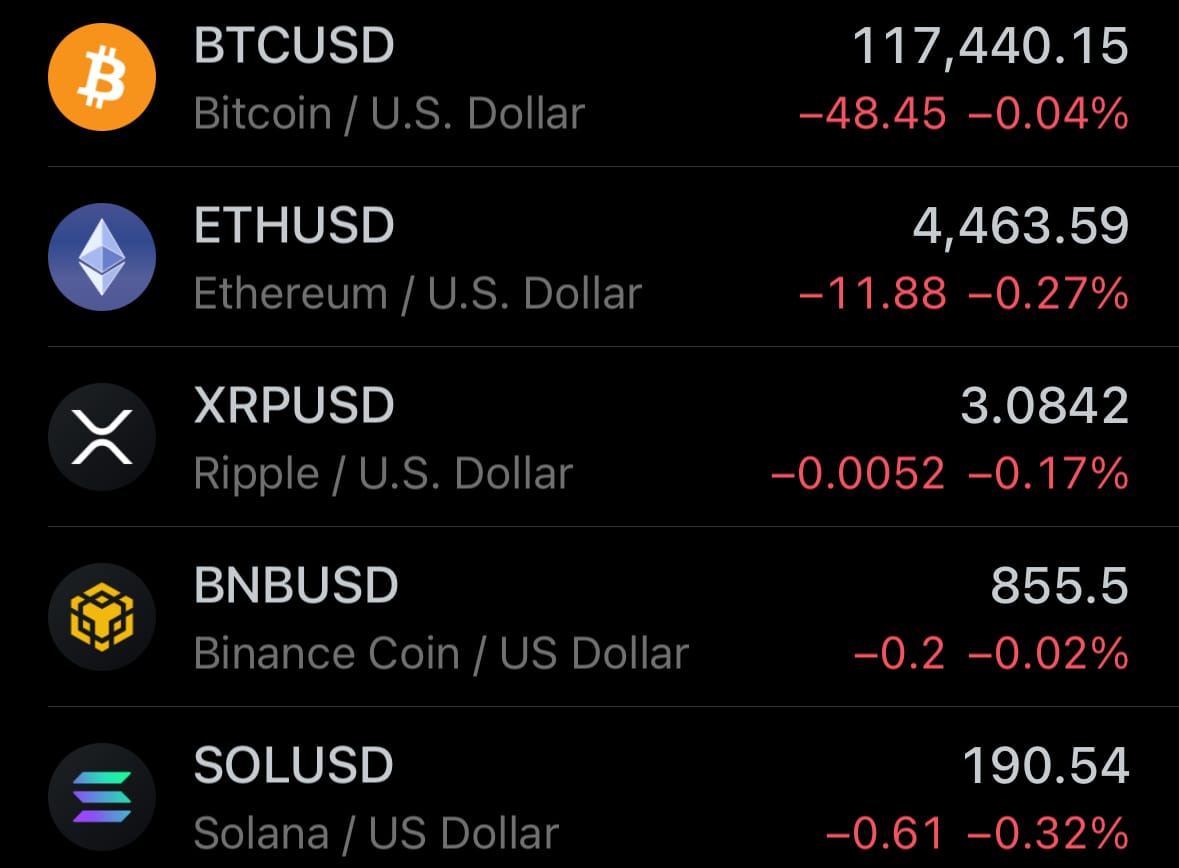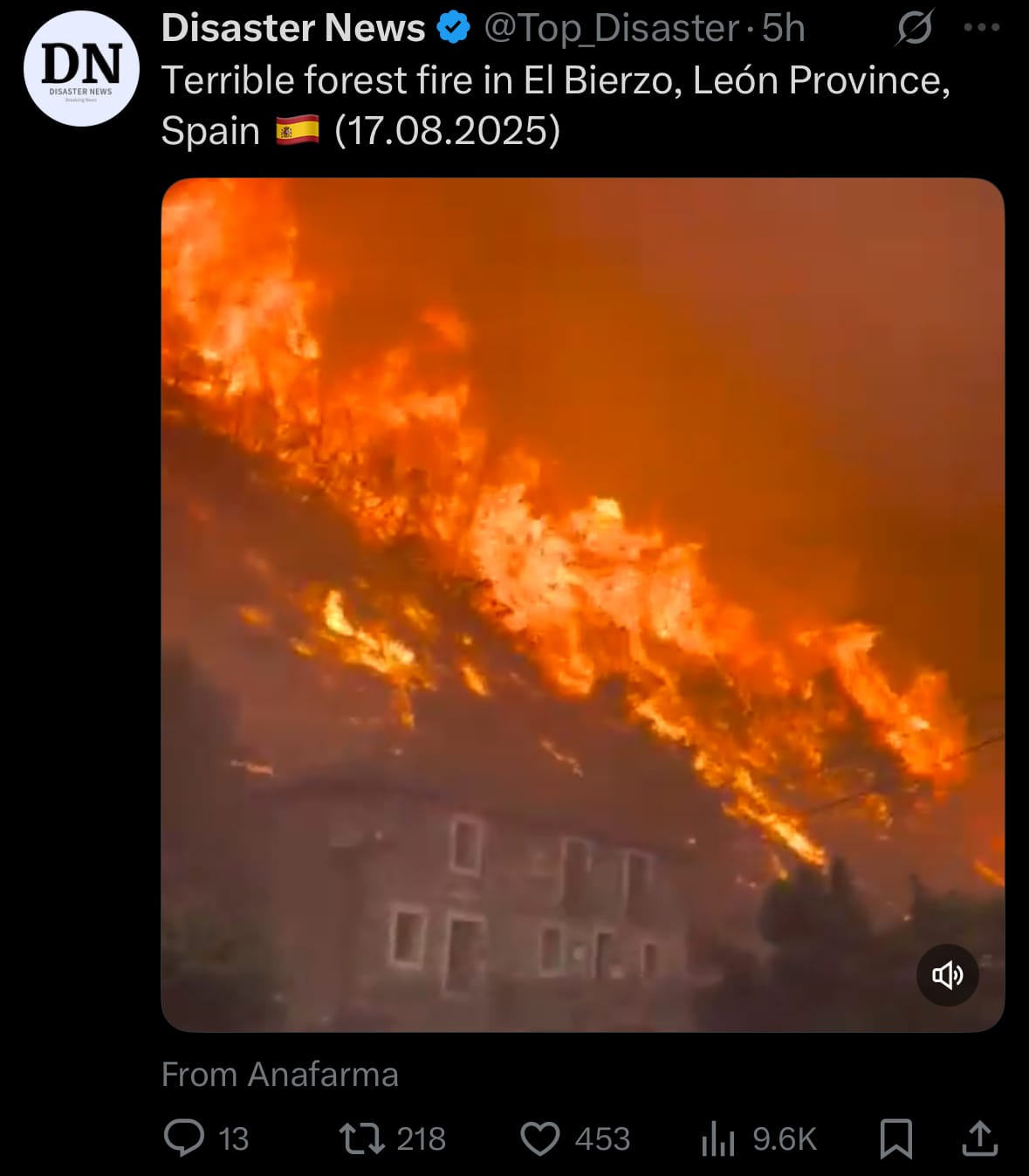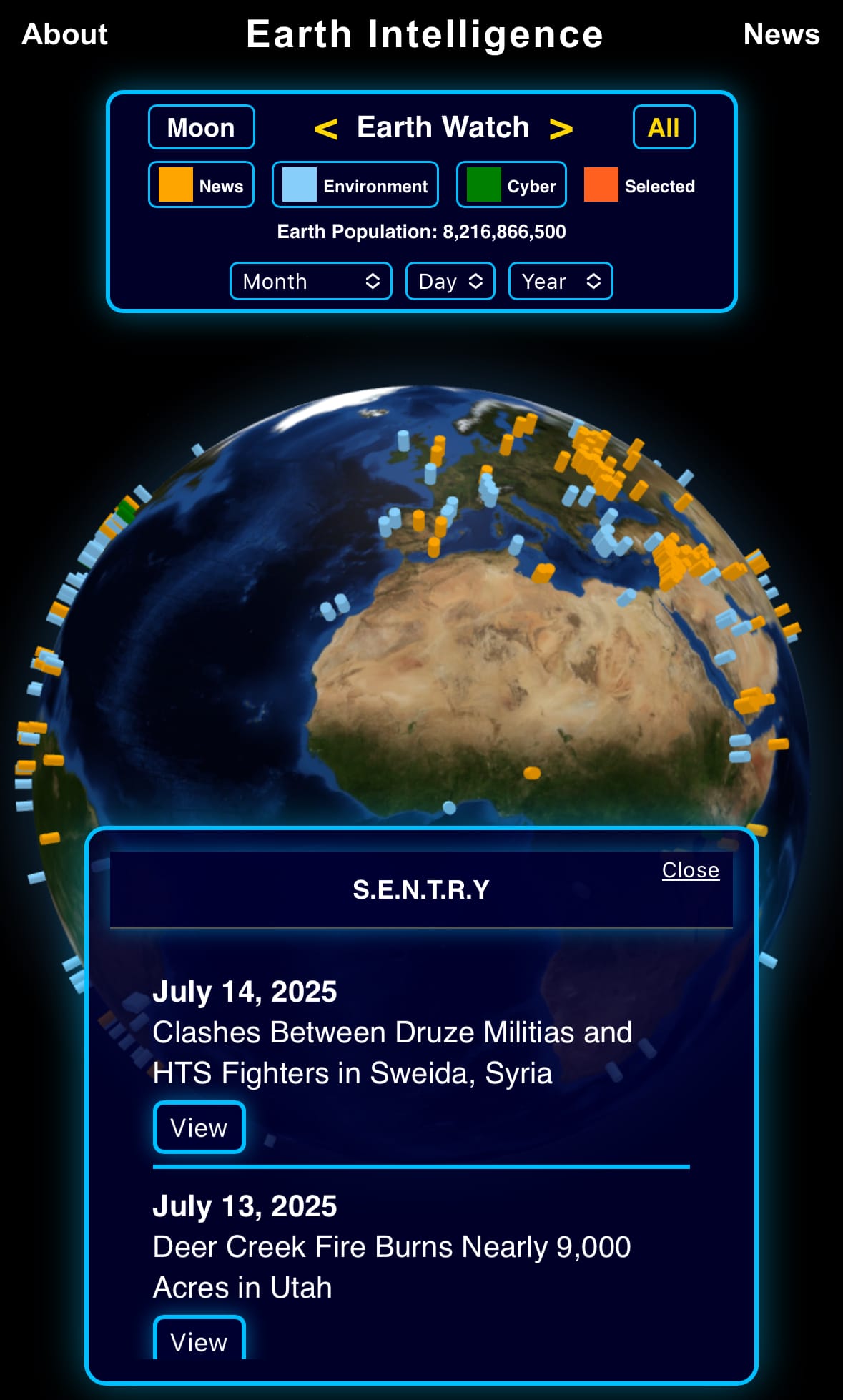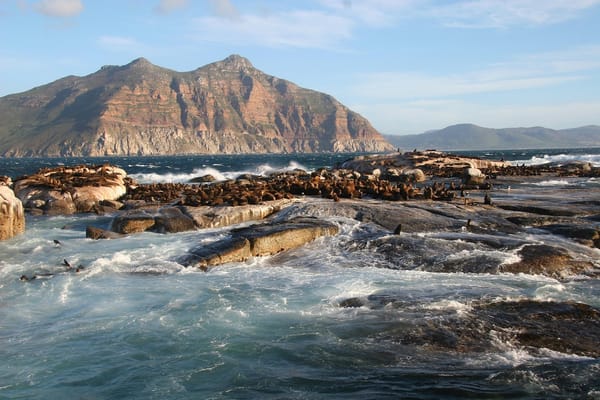Monday☕️

Economics & Markets:
- Yesterday’s commodity market:

- Yesterday’s crypto market:

Geopolitics & Military Activity:
- On August 17, 2025, multiple explosions were reported in Sana'a, the Houthi-controlled capital of Yemen, following strikes by Israeli Navy missile boats on the Haziz Power Station located south of the city, with the Israel Defense Forces (IDF) confirming the operation and stating that it targeted an energy infrastructure site used by the Houthi regime in retaliation for ongoing Houthi ballistic missile and drone attacks on Israel, which the IDF described as Iranian-backed, including recent incidents aimed at Israeli territory and shipping interests, while local residents and Houthi-affiliated media reported at least two powerful blasts that ignited fires at the facility, with Yemeni sources indicating the strikes damaged generators and other critical components, and the attack representing an escalation in the exchanges between Israel and the Houthis.

- The strikes led to widespread power outages across Sana'a and the surrounding governorate, affecting electricity supply to residential, commercial, and possibly essential services, although Yemen's Electricity Corporation director claimed the damage was limited and power would be restored within hours, with no immediate casualties confirmed but some reports suggesting senior Houthi figures may have been present at the site during the attack, prompting statements from Houthi officials vowing retaliation, and videos along with eyewitness accounts shared on social media showing flames and smoke rising from the power station, illustrating the impact on civilian infrastructure in a region already affected by prolonged conflict.
Environment & Weather:
- On August 17, 2025, a forest fire broke out in the El Bierzo region of León Province in northwestern Spain, occurring during a period of high temperatures and dry weather that has led to numerous wildfires throughout the country, with videos and reports showing flames moving through forested areas, producing significant smoke, and approaching communities including Oencia and Santo Tirso de Cabarcos, as part of more than 20 active fires primarily in the northwest where response teams are addressing outbreaks intensified by heat and low moisture levels, and local officials noted the fire began in a rural area and grew quickly under windy conditions, while the cause is still being examined without confirmed evidence of intentional or natural ignition.

- The incident has triggered response efforts involving firefighters and military support to control the spread, along with evacuations in some locations and advisories for people to stay away, and although no injuries or deaths have been documented yet, the fire has affected natural environments and local activities, contributing to a year where wildfires have consumed over 157,000 hectares (approximately 388,000 acres) across Spain, exceeding typical yearly figures by almost twofold, while coverage from various sources has pointed out the fire's location near historical areas such as the UNESCO-recognized Las Médulas, which remain unaffected according to current information, and authorities expect continued difficulties due to ongoing weather patterns, reflecting a trend of more frequent wildfires associated with climatic conditions in parts of Europe.
Space:
- On August 17, 2025, China conducted an orbital launch at 08:55 UTC, using a Long March 4C rocket from Launch Complex 3 at the Xichang Satellite Launch Center to deploy the Shiyan 28B-02 satellite, which is described in official statements as an experimental platform for space environment monitoring and technology testing, building on the Shiyan 28B-01 satellite launched in July that entered an 11-degree inclined low-Earth orbit, although specific details about the new satellite's orbit and exact purposes have not been publicly disclosed beyond general references to scientific experiments.
- Later that day at 14:15 UTC, China carried out another launch with a Long March 6A rocket from Launch Area 9A at the Taiyuan Satellite Launch Center, successfully placing five SatNet LEO Group 09 communication satellites into orbit as part of the Guowang constellation, a government-supported low-Earth orbit network managed by the China Satellite Network Group intended to offer broadband internet services on a global scale, and the Long March 6A being a partially reusable vehicle designed for multiple payload deliveries, this deployment representing the fifth batch for Guowang within 21 days, which contributes to the ongoing expansion of China's satellite capabilities in the context of worldwide developments in space technology, and together these two launches cover a range of experimental and communication-related objectives.
Statistic:
- Largest public insurance companies by market capitalization:
- 🇺🇸 UnitedHealth: $275.33B
- 🇩🇪 Allianz SE: $170.50B
- 🇨🇳 China Life Insurance: $145.85B
- 🇺🇸 Progressive: $144.88B
- 🇨🇳 Ping An Insurance: $144.37B
- 🇨🇭 Chubb: $109.32B
- 🇫🇷 AXA: $106.06B
- 🇨🇭 Zurich Insurance Group: $104.30B
- 🇺🇸 Marsh & McLennan Companies: $101.86B
- 🇭🇰 AIA: $100.24B
- 🇯🇵 Tokio Marine: $86.76B
- 🇩🇪 Munich RE (Münchener Rück): $84.51B
- 🇺🇸 The Cigna Group: $79.24B
- 🇬🇧 Aon: $79.13B
- 🇺🇸 Arthur J. Gallagher & Co.: $75.04B
- 🇺🇸 Elevance Health: $69.70B
- 🇮🇳 Life Insurance Corporation of India (LIC): $64.12B
- 🇮🇹 Generali: $60.77B
- 🇺🇸 The Travelers Companies: $59.79B
- 🇺🇸 Allstate: $54.48B
- 🇨🇭 Swiss Re: $53.32B
- 🇨🇦 Manulife Financial: $51.63B
- 🇺🇸 MetLife: $51.42B
- 🇨🇳 China Pacific Insurance: $50.82B
- 🇨🇳 The People’s Insurance Company (PICC): $49.90B
History:
- Television’s history begins in the late 19th and early 20th centuries with inventors experimenting with transmitting images through mechanical and electronic means. Early concepts included Paul Nipkow’s “Nipkow disk” in 1884, which used rotating disks to scan and reproduce images, and the work of John Logie Baird, who demonstrated the first working mechanical television system in the 1920s. These early televisions were crude, with low resolution and limited appeal, but they laid the foundation for electronic television. In the 1930s, pioneers like Philo Farnsworth and Vladimir Zworykin developed fully electronic systems using cathode ray tubes, which dramatically improved image quality. By the late 1930s and 1940s, television broadcasts had begun in the U.S. and Europe, and after World War II, television rapidly grew into a household staple.
- Through the second half of the 20th century, television evolved into color broadcasting, remote controls, and eventually digital formats. The 1980s and 1990s brought cable and satellite television, expanding the number of available channels and content diversity. The early 2000s saw the decline of bulky cathode ray tube TVs and the rise of flat-panel displays such as plasma, LCD, and later LED screens, transforming the viewing experience with higher resolution and larger screen sizes. Today, television has shifted into the era of smart TVs and streaming, integrating internet connectivity, 4K and 8K resolutions, and interactive platforms. Modern televisions are no longer just broadcast receivers but central hubs for digital entertainment, connecting viewers to global media, gaming, and on-demand content.
Image of the day:

Thanks for reading!
Earth is complicated, we make it simple.
Click image to view the Earth Intelligence System:



Support/Suggestions Email:
earthintelligence@earthintel.news




